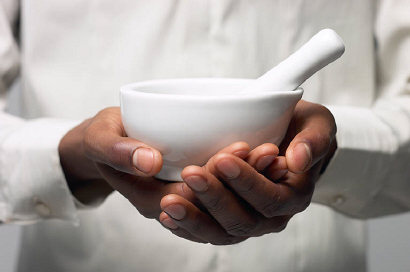
More than 1,200 adulterants, including prescription medicines and banned drugs, have been identified tainting proprietary Chinese medicines in Hong Kong, a study has found revealing the severity of the fraud.
Published in the British Journal of Clinical Pharmacology, the study by scientists from the Princess Margaret Hospital in Hong Kong, found a wide variety of adulterants, including approved drugs, banned drugs, drug analogues and animal thyroid tissue, causing a significant number of adverse effects, some of which were severe and even fatal.
“These illicit proprietary Chinese medicines (pCMs) and health products pose severe health hazards to the public,” said Dr Tony Wing Lai Mak, consultant pathologist at the Princess Margaret Hospital and principal study investigator. “Previous reports of pCM and health product adulteration were mainly routine surveillance data or case reports/series with a small number of affected patients. The present study, to our knowledge, is the largest case series that reports an overview of the use of various adulterated pCMs and health products and the resulting adverse effects.”
The study looked at the general belief that Chinese medicine – which includes various herbal ingredients claimed to have nutritional, physiological or health promoting effects – is considered natural and safe, which has boosted its popularity as a complementary medicine around the world.
However, incidences of adulteration and counterfeiting have been reported. In August, a study found that just 22 per cent of common traditional Chinese medicine contained the authentic honeysuckle ingredient correctly listed on the packet.
The Hong Kong researchers, who have seen “numerous poisoning cases related to the use of adulterated pCMs”, sought to highlight the severity of how the safety of pCMs were being compromised by adulteration.
By reviewing cases of pCMs confirmed to contain undeclared adulterants over the decade from 2005 to 2015, the researchers found 404 cases involving the use of 487 adulterated pCMs or health products, with a total of 1,234 adulterants identified.
The Chinese medicines were indicated for the treatment of weight loss, various pain conditions such as joint pain, gout and rheumatism, erectile dysfunction, diabetes, and skin disorders such as eczema and psoriasis.
The researchers noted that there was an average of 2.5 adulterants per product and, in the most extreme case, up to 17 adulterants were detected in a single product indicated for pain.
The six most common categories of adulterants detected were non-steroidal anti-inflammatory drugs (NSAIDs) (17.7 per cent), appetite suppressants (15.3 per cent), corticosteroids (13.8 per cent), diuretics and laxatives (11.4 per cent), oral antidiabetic agents (10.0 per cent), and erectile dysfunction drugs (6.0 per cent).
The appetite suppressant sibutramine, which has been pulled from the US and Hong Kong markets due to its association with increased cardiovascular events and strokes, was the most common adulterant, found in 31.8 per cent of the illicit products. This was followed by phenolphthalein, a banned laxative commonly adulterated together with sibutramine, which was detected in 18.1 per cent of the adulterated products.
Antidiabetic drug glibenclamide, painkiller diclofenac, corticosteroid prednisone acetate, erectile dysfunction drug sildenafil, antihistamine chlorpheniramine and painkiller piroxicam were also found in more than one-tenth of the samples.
Meanwhile, banned drugs were also found as adulterants including the banned appetite suppressant fenfluramine, antidiabetic phenformin, and withdrawn painkillers phenylbutazone and phenacetin.
The research found that 65.1 per cent of patients had experienced an adverse effect attributable to the illicit products, with psychosis, iatrogenic (drug-related) Cushing syndrome, and hypoglycaemia the three most frequently encountered adverse effects. There were also 14 severe and two fatal adverse effects cases.
Other side effects noted included palpitation, renal impairment, abnormal thyroid function, deranged liver function and adrenal insufficiency.
The reported sources of the adulterated products included over-the-counter drug stores (33.6 per cent), the internet (25.9 per cent), and Chinese medicine practitioners (24.5 per cent).
The researchers said they believed that in the majority of cases, the adulterants were probably added to increase efficacy, while the use of some adulterants, such as drug analogues, were used to avoid detection by regulatory authorities.
The cases reviewed in the study only related to cases that were referred to the hospital laboratory as a result of suspected poisoning or suspicion of adulteration. The researchers said the findings could therefore not be extrapolated to represent the market situation.
However, they noted that the study still highlighted the danger of adulterated Chinese medicine and called for enhanced public awareness of the risk of adulterated products.
“Adulteration of pCMs and health products with undeclared drugs has become a global problem,” the study concluded. “Disguised as natural and safe products, these illicit pCMs and health products are clearly hazardous to the public. Intensive health education as well as effective regulatory control are important measures to combat this problem.”
©
SecuringIndustry.com
 | back to top
| back to top





